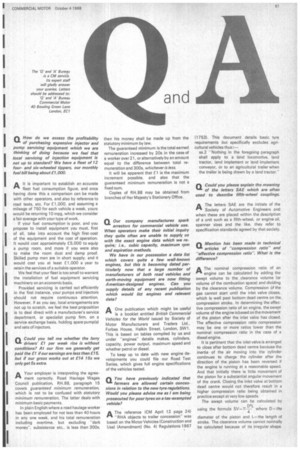Q Mention has been made in technical articles of "compression ratio" and "effective compression ratio": What is the difference?
Page 63

If you've noticed an error in this article please click here to report it so we can fix it.
AThe nominal compression ratio of an engine can be calculated by adding the swept volume to the clearance volume (or volume of the combustion space) and dividing by the clearance volume. Compression Of the gas cannot start until the inlet valve closes, which is well past bottom dead centre on the compression stroke. In determining the effective compression ratio of an engine, the swept volume of the engine is based on the movement of the piston after the inlet valve has closed. The effective compression ratio compression may be one or more ratios lower than the nominal compression ratio in the case of a diesel engine.
It is pertinent that the inlet valve is arranged to close after bottom dead centre because the inertia of the air moving into the cylinder continues to charge the cylinder after the direction of the piston has been reversed if the engine is running at a reasonable speed. And that initially there is little movement of the piston for a substantial angular movement of the crank. Closing the inlet valve at bottom dead centre would not therefore result in a higher compression ratio being obtained in practice except at very low speeds.
The swept volume can be calculated by
using the formula SV---7 —D2-L where CI—the
diameter of the piston and L—the length of stroke. The clearance volume cannot normally be calculated because of its irregular shape.












































































































